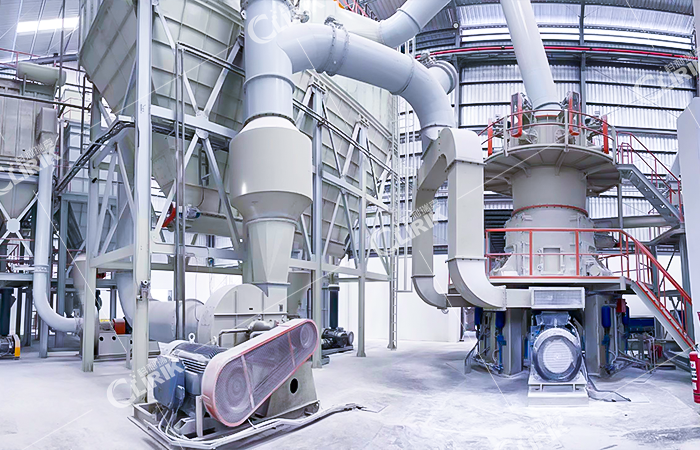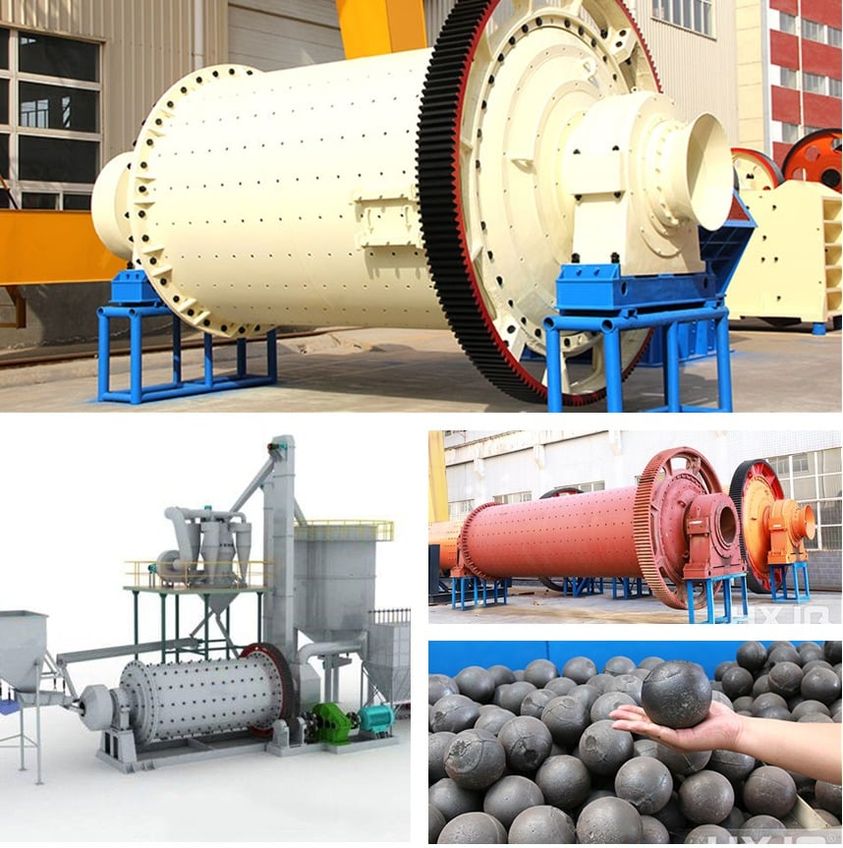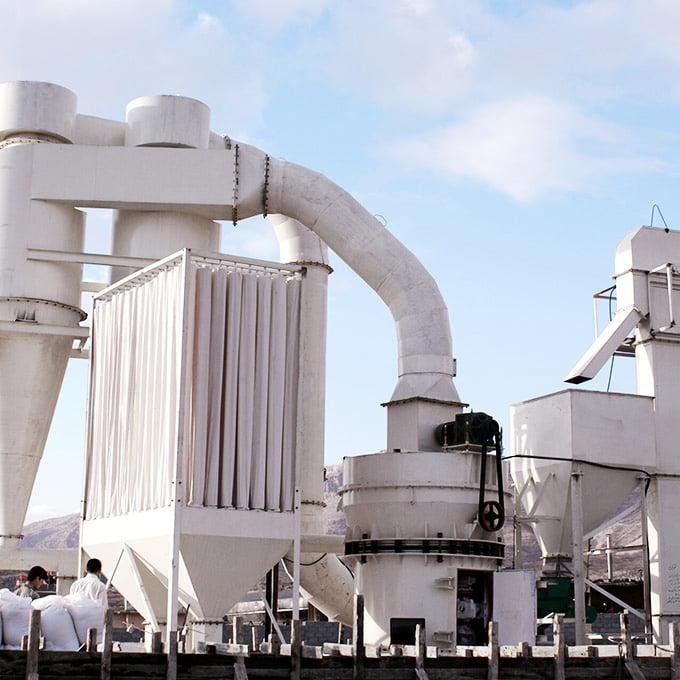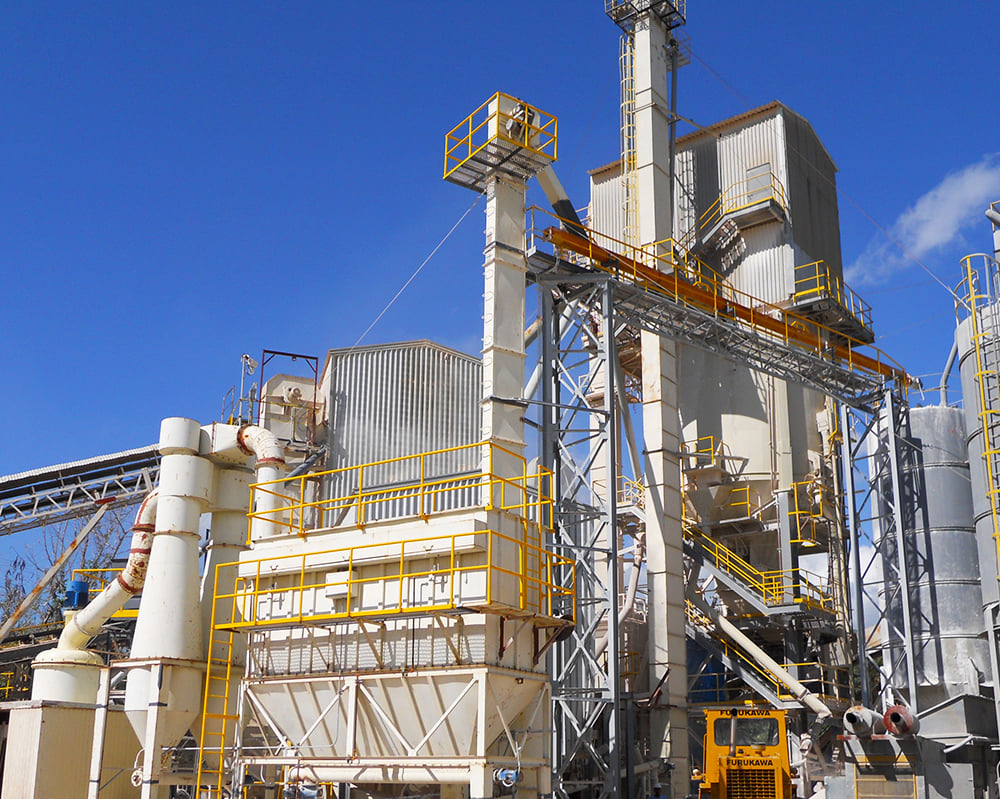News
Phosphate rock powder mill
Date:2023-02-16 14:30:24
Phosphate rock powder mill is a machine used to grind phosphate rock into a fine powder.
Phosphate rock is a naturally occurring mineral that contains high levels of phosphorus, which is an important nutrient for plants. Phosphate rock powder mills are commonly used in the production of fertilizers and animal feed.

Phosphate rock
Phosphate rock powder process
The process of producing phosphate rock powder typically involves the following steps:
1. Mining: Phosphate rock is extracted from the ground using mining equipment.
2. Grinding: The extracted phosphate rock is crushed and ground into a fine powder using a phosphate rock powder mill.
3. Beneficiation: The powdered phosphate rock is then processed to remove impurities and increase the concentration of phosphorus.
4. Production of fertilizers and animal feed: The purified and concentrated phosphate rock powder is used to produce a variety of fertilizers and animal feed products.
Phosphate rock powder mills come in different types and sizes, including vertical mills, ball mills, and roller mills. The choice of the mill depends on the desired particle size, capacity, and other factors.
Main types of phosphate rock powder mills
1. Vertical mills: These are commonly used in the production of fertilizers and are known for their high efficiency and low energy consumption. They are also suitable for grinding other materials, such as coal and cement.

2. Ball mills: These are commonly used in the production of animal feed and are known for their ability to grind hard materials. They can also be used for grinding minerals and other materials.

In addition to the type of mill, the choice of grinding media is also important. Commonly used grinding media include steel balls, ceramic balls, and rods.
3. Roller mills: These are commonly used in the production of fertilizers and animal feed. They are known for their high capacity and ability to grind a wide range of materials.
Raymond mill: also named 3/4/5/6 roller mill.
Raymond mill is a type of grinding mill that is widely used in the processing of various minerals, including limestone, calcite, dolomite, barite, talc, gypsum, diabase, quartz, bentonite, etc. It is a high-efficiency and low-consumption grinding equipment that can process materials to a fine particle size of 400 mesh or even finer.

HGM micro powder grinding mill: also known as 21/24/28/32 roller grinding mill.
HGM micro powder grinding mill is a type of grinding equipment that is widely used in the processing of various minerals, including talc, calcite, limestone, barite, dolomite, mica, kaolin, graphite, and other non-metallic minerals. It is a high-efficiency and low-consumption grinding equipment that can produce fine and ultrafine powder with a fineness of 3000 mesh or even higher.

It's worth noting that the production of phosphate rock powder can be a source of environmental pollution if not properly managed. The mining and beneficiation processes can generate waste products such as slurry and tailings, which can contain heavy metals and other pollutants. Therefore, it's important to ensure that these waste products are properly treated and disposed of to minimize their environmental impact.
Phosphate powder uses
Phosphate powder is a versatile material with a wide range of applications. Here are some of the common uses of phosphate powder:
1. Fertilizers: Phosphate powder is a key component in the production of fertilizers, especially those used for crops that require high levels of phosphorus, such as corn, soybeans, and wheat. The phosphate in the powder provides an essential nutrient for plant growth and helps improve soil fertility.
2. Animal feed: Phosphate powder is also used in the production of animal feed, especially for poultry, swine, and dairy cattle. It provides essential nutrients for animal growth and helps improve the quality of the feed.
3. Water treatment: Phosphate powder can be used to treat wastewater and remove pollutants such as heavy metals and organic compounds. It is also used in drinking water treatment to prevent corrosion in pipes and improve water quality.
4. Flame retardants: Phosphate powder can be used as a flame retardant in various materials, including plastics, textiles, and wood. It works by reducing the flammability of the material and slowing down the spread of fire.
5. Dental care: Phosphate powder is used in toothpaste and other dental care products to help strengthen teeth and prevent tooth decay.
6. Construction materials: Phosphate powder is sometimes added to cement and concrete to improve their properties, such as strength and durability.
These are just some of the many uses of phosphate powder. Its versatility and importance make it a critical material in various industries, particularly in agriculture and food production.
What should be paid attention to in the processing of phosphate rock powder?
In the processing of phosphate rock powder, there are several key factors that should be paid attention to in order to ensure optimal performance and product quality. Here are some of the most important considerations:
1. Quality of raw material: The quality of the phosphate rock used as the raw material can have a significant impact on the quality of the final product. It is important to select high-quality phosphate rock that is free of contaminants and has a consistent composition.
2. Grinding conditions: The grinding conditions, including the type of mill, grinding media, and operating parameters such as speed and time, can affect the particle size and distribution of the final product. It is important to optimize these conditions to achieve the desired product quality and consistency.
3. Product purity: Phosphate rock powder is often processed to remove impurities and increase the concentration of phosphorus. It is important to ensure that the purification process is effective and does not introduce any new contaminants.
4. Environmental impact: The processing of phosphate rock powder can have environmental impacts, including air and water pollution. It is important to adopt environmentally sustainable practices, such as reducing waste and emissions, and adopting energy-efficient technologies.
5. Quality control: Quality control measures should be implemented throughout the processing of phosphate rock powder to ensure that the final product meets the desired specifications. This can include testing for particle size, purity, and other quality parameters.
By paying attention to these factors, processors of phosphate rock powder can ensure that their final product is of high quality, consistent, and produced in an environmentally responsible manner.
How much does it cost to invest in a small phosphate rock powder processing plant?
The cost of investing in a small phosphate rock powder processing plant can vary widely depending on several factors, such as the scale of the operation, the quality of the equipment, and the complexity of the production process. However, here are some general guidelines to give you an idea of what to expect:
1. Equipment cost: The equipment cost is likely to be the biggest expense when setting up a phosphate rock powder processing plant. The cost of equipment can vary depending on the specific needs of the plant, but you can expect to spend several hundred thousand to several million dollars on equipment.
2. Site preparation and construction: Before installing the equipment, you will need to prepare the site and construct the necessary buildings and infrastructure. This can include items such as electrical wiring, plumbing, and ventilation systems. The cost of site preparation and construction can vary widely, depending on the location and size of the plant.
3. Labor and operating expenses: Once the plant is operational, you will need to hire staff to run the equipment and manage the production process. You will also need to factor in the cost of raw materials, utilities, and other operating expenses.
Overall, the cost of setting up a small phosphate rock powder processing plant can range from several hundred thousand dollars to several million dollars, depending on the scale and complexity of the operation. It is important to conduct a thorough feasibility study and cost analysis before embarking on any such project to ensure that the investment is financially viable and sustainable.
What are the investment prospects?
The investment prospects for a phosphate rock powder processing plant can be positive, as there is a growing global demand for phosphate-based fertilizers and other products. Here are some of the key factors that support a favorable investment outlook:
1. Growing demand for phosphate-based products: Phosphate rock powder is a key ingredient in the production of fertilizers, animal feed, and other products that are critical to global food production. The demand for these products is expected to continue to grow as the global population increases and agricultural productivity needs to improve.
2. Favorable market conditions: The market conditions for phosphate-based products have been favorable in recent years, with strong demand and stable pricing. This has encouraged investment in the industry and has created opportunities for new players to enter the market.
3. Technological advancements: Advances in technology have made it possible to produce high-quality phosphate rock powder more efficiently and with less environmental impact. This has opened up new opportunities for innovation and growth in the industry.
4. Government support: Many governments around the world offer incentives and support programs for businesses that invest in the production of fertilizers and other agricultural products. This can help to reduce the initial cost of investment and provide a stable regulatory environment.
The investment prospects for a phosphate rock powder processing plant can be positive, provided that the project is well-planned and executed. It is important to conduct a thorough market analysis and feasibility study to ensure that the investment is financially viable and sustainable.
More about phosphate powder mill you should know
Here are some additional details about phosphate powder mills that you may find helpful:
1. Operation and maintenance: Phosphate powder mills require regular maintenance to ensure optimal performance and extend their lifespan. Common maintenance tasks include lubricating bearings, inspecting wear parts, and checking the overall condition of the mill. Operators should also monitor the grinding process to ensure that the mill is producing the desired particle size and that there are no issues with overheating or other problems.
2. Safety considerations: Phosphate powder mills can be hazardous if proper safety measures are not taken. Workers should be trained in the safe operation of the mill and should wear appropriate personal protective equipment (PPE) such as gloves, safety glasses, and respiratory protection. It is also important to ensure that the mill is properly grounded to prevent electrical shocks and other hazards.
3. Environmental concerns: The production of phosphate powder can have environmental impacts, including soil and water contamination, as well as the release of greenhouse gases during the manufacturing process. To minimize these impacts, operators should implement environmentally sustainable practices, such as reducing waste and emissions, and adopting energy-efficient technologies.
4. Customization options: Phosphate powder mills can be customized to meet specific requirements, such as particle size, production capacity, and the type of material being ground. Different types of mills and grinding media can be selected based on the specific needs of the application.
5. Cost considerations: The cost of a phosphate powder mill can vary widely depending on factors such as capacity, type, and manufacturer. It is important to weigh the upfront cost against the potential benefits of improved productivity, efficiency, and product quality.
Phosphate powder mills are an essential component in the production of fertilizers, animal feed, and other products that are critical to global food production. Proper operation, maintenance, and safety practices are crucial to ensuring their optimal performance and minimizing their environmental impact.


